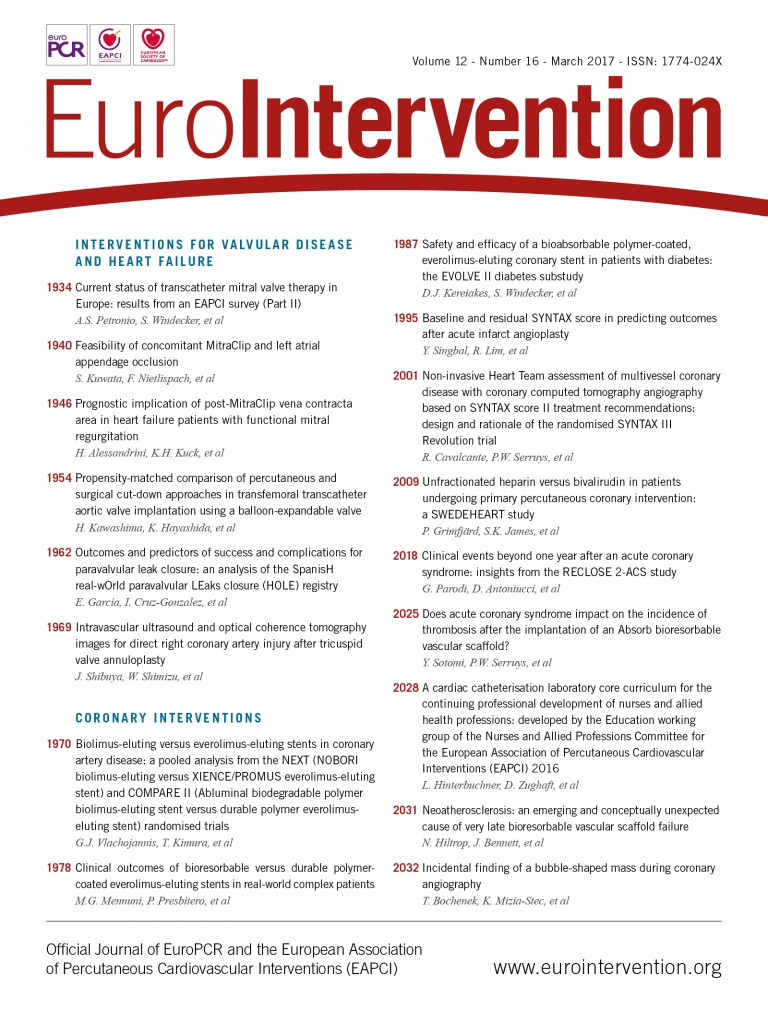
In 2015, the third EAPCI summit was convened in Nice at the headquarters of the European Society of Cardiology (ESC) to “reactivate the annual survey on interventional cardiology practice in ESC countries”. The proceedings of this meeting were published at that time in EuroIntervention in an article entitled “Mapping interventional cardiology in Europe”1, where some of the key goals of the summit were outlined. These goals included offering the possibility of monitoring the heterogeneity in practices across member countries, elucidating obstacles to the implementation of guidelines and creating a record of the different dynamics of harmonisation in interventional cardiology practices.
Initially, the idea was to have a retrospective registry of different ESC countries reporting on interventional cardiology activity over a period of between five and six years. At the same time, the structure was to be put in place to prepare for prospective data collection which would eventually become the EAPCI white book. The ESC itself launched the ESC Atlas of Cardiology which, in the words of the society, “is a unique and ambitious initiative that aims to provide the evidence needed to improve decision making, patient care and bridge the gap between policies and realities” and which could further allow “all data to converge to reinforce the need to make cardiovascular disease the number one health priority for any decision maker”.
This project is of great interest to our association, and our work with the ESC Atlas marks the continued evolution of our coordinated work under the umbrella of our parent organisation. Clearly, these two initiatives dovetail perfectly together, with the results of the EAPCI registries naturally finding their place in the broader ESC Atlas. As Emanuele Barbato, lead author of the original EuroIntervention article on the EAPCI summit, explains “…in a nutshell, there is common interest from both the ESC and the EAPCI not to duplicate efforts and investment. The E-Atlas is a major effort of the ESC, whose assets already enable the performance of qualitative data collection.”. The EAPCI can add to this, by concentrating on “providing the political support, the network connection and the endorsement of the national societies of interventional cardiology” to further the project – participating in the Atlas and creating our ongoing white book.
In this vein, this May, during EuroPCR, EuroIntervention will be publishing a special supplement to the regular editions of the journal on the National Registries. Guest edited by Emanuele Barbato and Dariusz Dudek (respectively, chair of the EAPCI National Cardiac Societies and International Affairs Committee and chair of the Education & Training Committee), this supplement will bring together data from the past six years (January 2010 to December 2015) from more than 15 participating national societies, focusing on three main topics: demographics and organisation, coronary interventions and structural heart interventions. In building this project our Association has also strongly encouraged the involvement of the EAPCI’s Young National Ambassador (YNA) programme.
It is clear then that not only does such an initiative underline the importance of understanding where we stand today on both a national and an international level in terms of interventional and general cardiology, but it also allows us to further integrate and build the community of specialists that will construct – and ensure – the quality of future practice.
Reference
|
NEWS ■ Join us in the EAPCI webinar “Focus on bleeding management strategy in patients under oral anticoagulation after PCI – from randomised clinical trials to the individual patient” with Dr Robert Byrne and Profs Marco Roffi and Andreas Baumbach. This webinar is free for everyone. Register online at www.escardio.org/eapci ■ Check out all the ESC webinars at www.escardio.org/EAPCI - Education section! |

